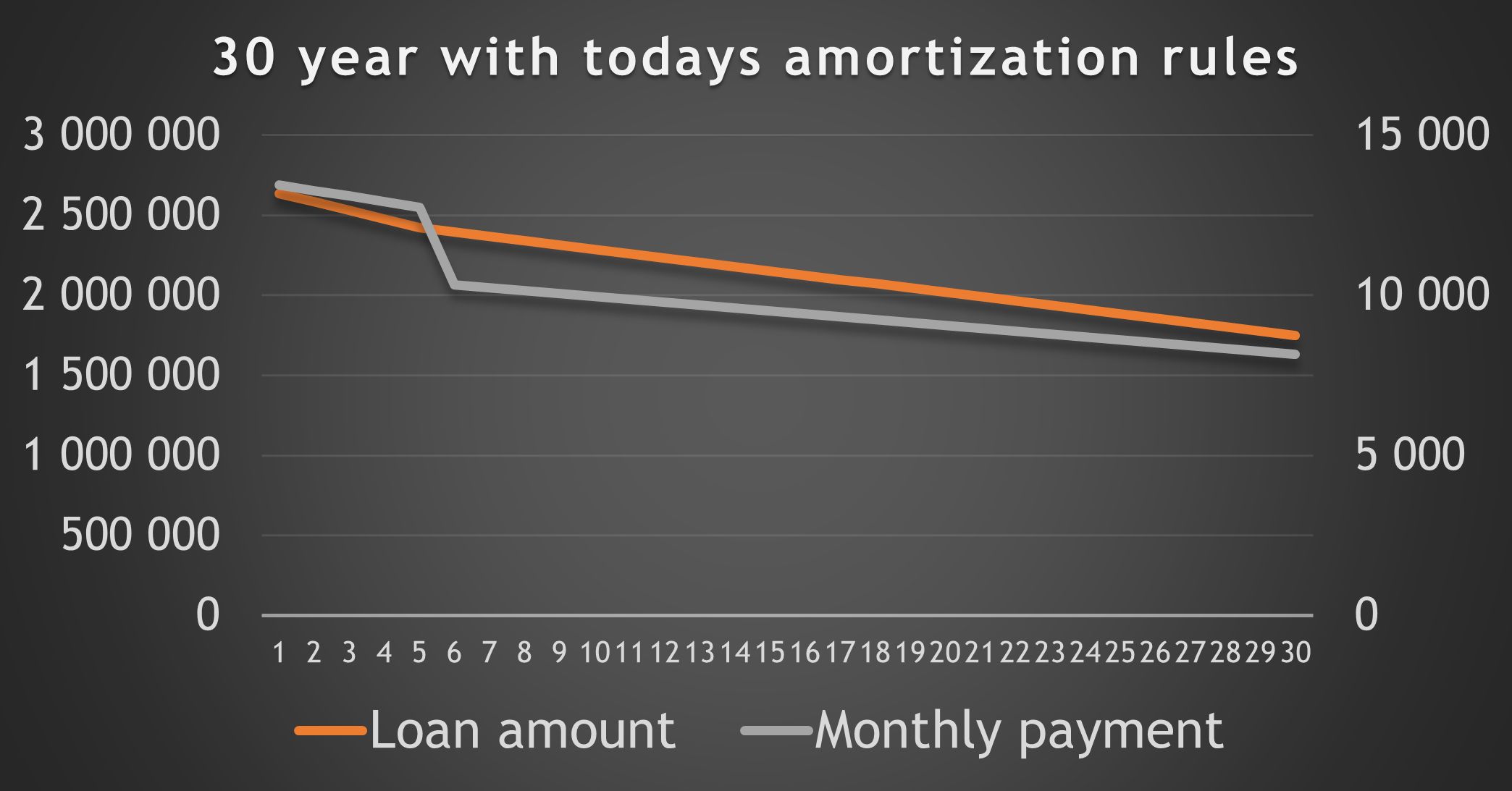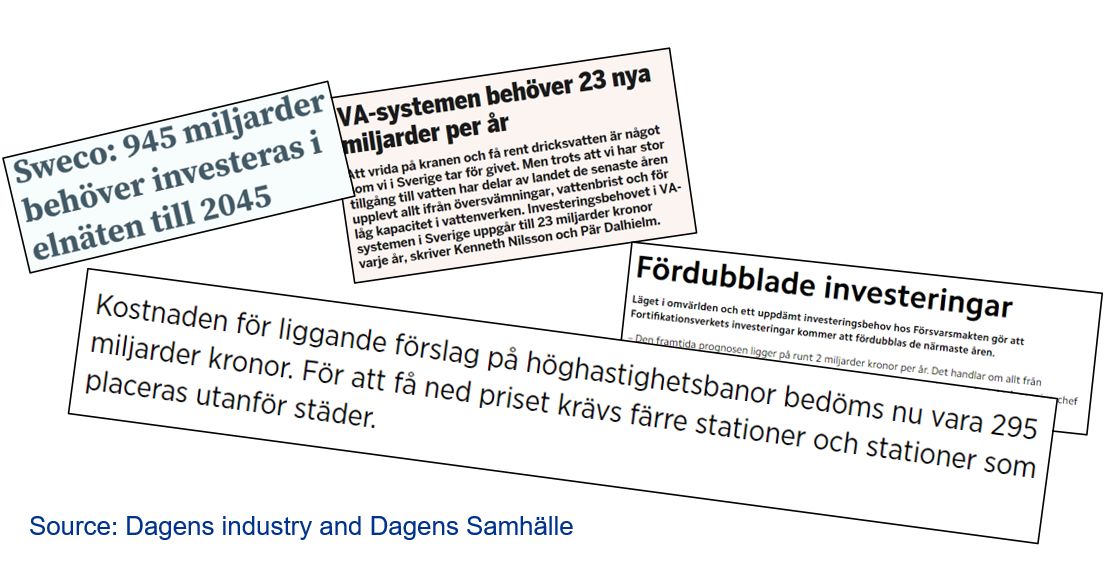Background
In the previous two articles, we highlighted some of the potential drivers behind the weak performance of the SEK:
• Government selling of the Swedish Krona – boosting the external reserves and repaying foreign debt
• Institutional selling – increased allocation of savings into equity markets and especially to the US equity market. Driven by both political decisions as well as portfolio theory.
• Household selling – driven by savings in mutual funds with a large exposure to the global equity markets.
• Demographics – a relatively high savings rate due to workforce participation level vs. the retired population. Savings that, to a high extent are funneled into global equities.
Potential solutions

1) Abandon the SEK in favor of the EUR
This would effectively put the supply and demand forces out of play and end the discussion of the weak SEK. On the negative side of things, we highlight the following:
• For a small open economy like Sweden, the national currency may act as the canary in the coalmine when there is something undermining the trust or balance of the economy. Swapping SEK to the EUR would be a band aid rather than a cure.
• Domestic monetary policy is a tool at the Swedish central bank’s disposal to utilize when and if needed.
• Bigger is not necessarily better. The fiscal discipline in the EMU area is not living up to its own goals; Sweden would become a member of club with looser fiscal discipline.
2) Review the inflation target
This is a discussion that is already underway, and we will not go deeper into this area. One of many voices on the Swedish inflation target is Rune Andersson (former CEO of Trelleborg and Chairman of the Electrolux board), here you can read a longer interview with him.
3) Reform the mortgage market
Sweden differs from many other countries around the world in the sense that the borrower is not free to renegotiate the term of a long-term mortgage loan without paying a potentially large penalty to the bank. This peculiarity may lead to a less flexible housing market, should the households on aggregate borrow long-term. The uncertainty of future interest rate levels causes the banks to add several percentage points to the loan cost when calculating the credit capacity of the borrower. This practice effectively raises the bar for new entrants to the housing markets.
Potential benefits of a new product may be:
- Further strengthen the collective culture to amortize debt.
- Lower the threshold for new entrants to the housing market with long fixed-rate products.
- No lock in effect from high penalty cost when households need to repay a mortgage ahead of time.
- A reduction in the populations interest rate sensitivity may boost the confidence in the Swedish economy in conditions such as the ones we have right now with rising inflation and interest rates.
Challenges may be:
- New instruments in the mortgage market may take time to create and regulate.
- The right to renegotiate loans at any point in time is an option that comes with a price – yields are likely to be higher than comparable products that have no early repayment right for the borrower.
Below are two examples of todays system and a potential new product with 30-year annuity.
| Criteria | |
|---|---|
| Purchase price (SEK) | 3.165.000 |
| Down payment (SEK) | 474.750 |
| Starting loan balance (SEK) | 2.690.250 |
| Interest rate | 4% |
Today
A loan of 85% of the purchase amount. Amortization of 2% annually until the loan vs. purchase amount goes below 75%.

New product
Annuity loan of the same loan amount over 30 years until the loan is fully repaid.

The total cost over 30 years for this condo including purchase price, down payment, interest will in this example be:
Today’s loan products and amortizing rules SEK 5.779.923
Annuity loan SEK 5.142.073
The difference is due to the accelerated repayment schedule of the annuity loan resulting in a reduction of the total interest rate cost of SEK 637.850
4) Reform infrastructure investments
This could be done in many ways. Here we focus on just one of them. Reformation of the Swedish fiscal policy rules. Even the grandfather of the current policy from the 1990s Mr. Assar Lindbeck, is critical in how tools his commission proposed now has become the goal for government. Here is an article in Swedish from 2015.
Suggestion:
Create two budgets for the government with different purposes.
1. A spending budget with rules for deficits and surpluses.
2. An investment budget for larger infrastructure investments in areas like: energy, transportation, food and potentially health care.
Potential benefits of a dual budget could be:
• Stronger support for the transformation to a more sustainable economy via “large deals” of government-sponsored infrastructure investments.
• A regulated platform for broad political reform – if the rules require a qualified majority in the parliament to approve government investments.
Challenges that need to be handled:
• Politics may be slow or even gridlock to do necessary investments. Some might say that is a problem in today’s system too.
• Investments that move the cost over the spending budget for years and decades may create a culture of reckless spending. Therefore, the rules needs to be vigilant.
A potential restraint on the investment budget could be:
• Qualified 2/3 majority in parliament
• Transaction model for each investment to fund future cost i.e., road tolls, train fees, transmission cost for energy and similar type of schemes.
5) Risk management review on public pension allocation
“Past performance is no guarantee of future results”. This sentence is included in most financial product prospectus, and for a good reason. With a high exposure to the global equity markets, it may be justified with more scrutiny of the mandates given to investment manager that handles our future pensions. A more prolonged period of poor equity performance may put pension obligations in jeopardy. If the automatic brakes in the government pension payments kicks in when the economy is weak, we may face a more severe downturn than other countries.
Suggestion: a holistic review of the future allocation of our public savings that also considers the cost/benefit of using our savings in Sweden rather than investing only based on the expected financial return. Since most of the pensions is to be served by the future taxpayers, they need a healthy economy that is not underinvested in infrastructure and sustainable industry.
Potential benefits of a review are:
• Consider savings and investments in a broader context and avoid silo-based conclusions if possible.
• Take new experience in considerations when adjusting the investment rules for tomorrow.
Risk is that a larger overhaul may create uncertainty in the relatively small investment community.
Summary
Create investment opportunities in Sweden
We started looking at the root cause of the mysteriously weak SEK and end up suggestions about sweeping budget reforms and new products in the mortgage loan market. This is not a political statement, but rather shows how complex the issue of the weak SEK really is.
Underinvested corporations usually gets penalized by the stock market. Is Sweden just a underinvested country getting penalized by the currency market when we export our savings overseas?
Below are just a few news clips from the last twelve months.
Ginormous investment need

The analogy
We all know our canary bird, the Swedish Krona, has been ill for decades. Should we just keep buying new birds and put in the cage, or try to address the root cause of SEK weakness? Our mine is leaking hazardous gases and we know it. The proposed solutions are just examples of:
• how to tackle lack of confidence in the Swedish mortgage borrowers
• reduce exporting the collective savings of future retirees
• lay the ground for a successful transformation of the Swedish economy into a prosperous and sustainable future via necessary infrastructure investments.
If we do, don’t be surprised if the SEK will strengthen in the process.
Disclaimer
This article is not a public statement by KPMG AB or its network of other partner firms. The writer expresses his/her own opinions based on their experiences and knowledge of the subject in question.
Read more - part one and two of the article series
Kontakta oss
- Våra kontor kpmg.findOfficeLocations
- kpmg.emailUs
- Sociala medier @ KPMG kpmg.socialMedia


